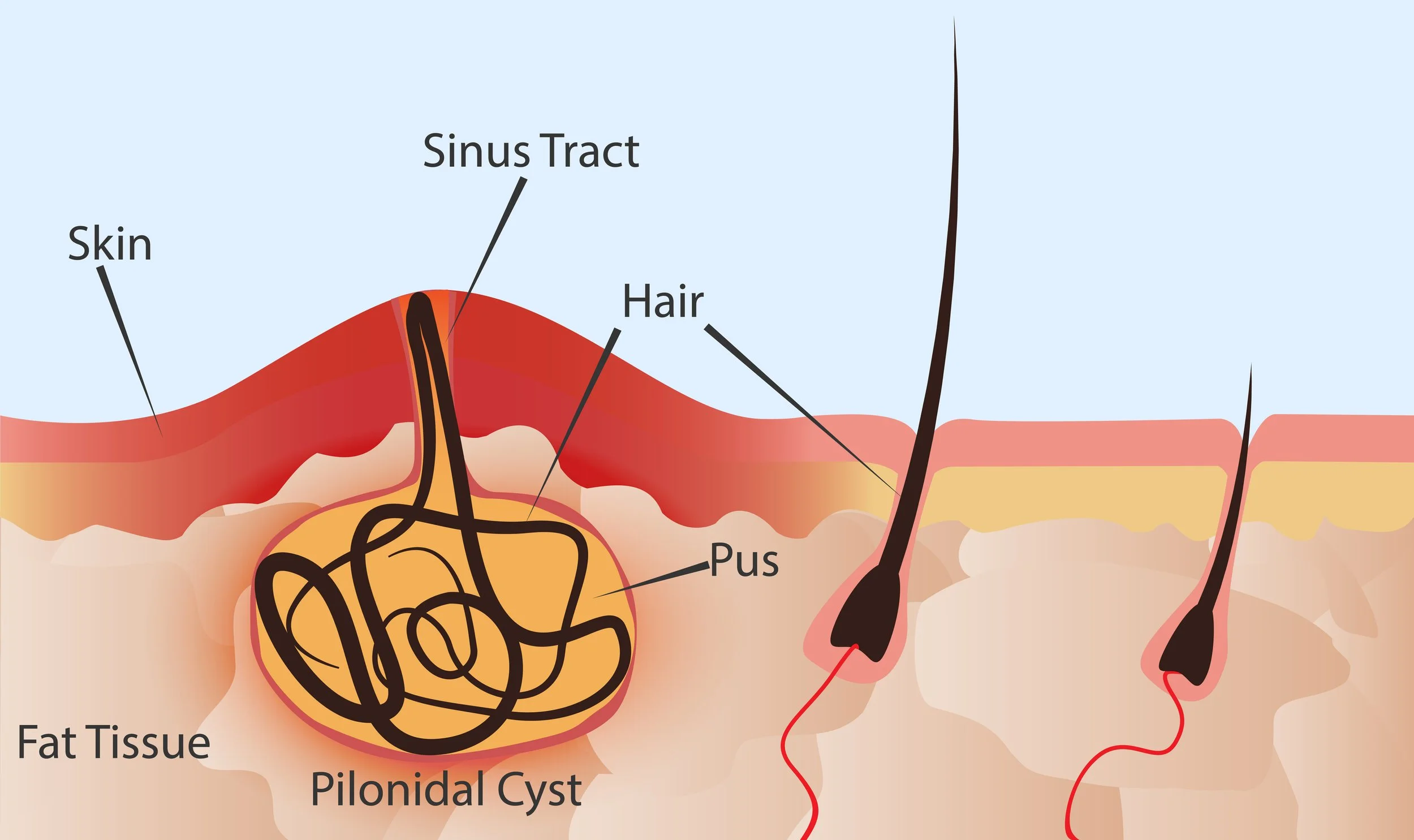Pilonidal cysts can be a painful condition; they affect the skin near the tailbone. However, cysts can occur in various parts of the body. Today, we will chat about what cysts are, the different types of cysts, as well as the causes, symptoms, and available treatment options for pilonidal cysts. Let’s get started and answer all of your questions.
What Is a Cyst?
A cyst is a sac-like pocket filled with fluid, air, or other substances that can develop in different areas of the body. They vary in size, ranging from small to large, and can occur in various tissues and organs. Cysts can be classified into different types, including sebaceous cysts, ganglion cysts, and pilonidal cysts.
Common Questions About Pilonidal Cysts:
#1: What Are Pilonidal Cysts?
Pilonidal cysts develop when hair follicles become infected and inflamed, resulting in the formation of a cyst. The exact cause of pilonidal cysts is not fully understood, but several factors contribute to their development. These factors include:
Hair penetration: Loose hairs that penetrate the skin can trigger an immune response, leading to cyst formation.
Congenital factors: Pilonidal cysts can be present at birth or develop later in life due to inherited traits.
Excessive hair growth: Individuals with dense or coarse hair are more prone to pilonidal cysts.
Friction or pressure: Continuous pressure or friction in the affected area, such as prolonged sitting or repetitive trauma, can contribute to cyst formation.
#2: What Are the Symptoms of Pilonidal Cysts?
Pilonidal cysts tend to come with the following symptoms: pain and tenderness, redness and swelling, drainage of pus or blood, and even foul odor (especially if there is an infection present).
#3: Do Pilonidal Cysts Go Away?
Pilonidal cysts, unfortunately, do not typically go away on their own without appropriate treatment. While some cysts may temporarily shrink or become less painful, they often recur and can worsen over time if left untreated.
#4: What Happens if You Ignore a Pilonidal Cyst?
Without intervention, pilonidal cysts can become chronic and lead to the development of abscesses or sinus tracts, which are narrow channels under the skin. These complications can cause persistent pain, recurrent infections, and difficulties with daily activities.
#5: How Do You Get Rid of Pilonidal Cysts?
Depending on the severity of the cyst and the patient's condition, pilonidal cyst treatment options may include antibiotics, warm compresses, pain management, and surgical intervention.
Surgical procedures, such as incision and drainage or excision and closure, are often necessary to remove the cyst and affected tissue completely. In some cases, flap surgery may be performed to improve healing and reduce the risk of recurrence.
Are You Dealing With a Pilonidal Cyst?
Here at the Colorectal Clinic of Tampa Bay, our colorectal specialists, especially Dr. Itriago, are highly skilled with treating pilonidal cysts. We can help you get the relief you’re looking for and help you avoid recurrence. Contact our office today to learn more and schedule an appointment.

